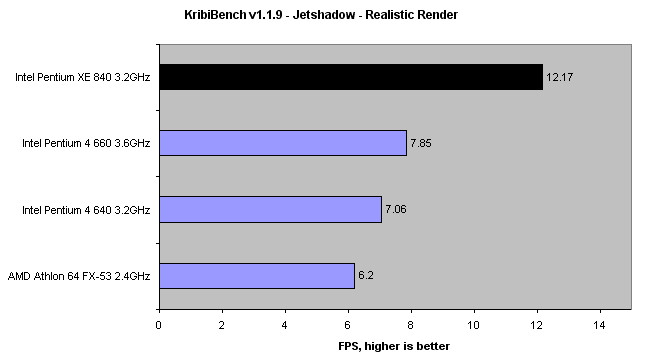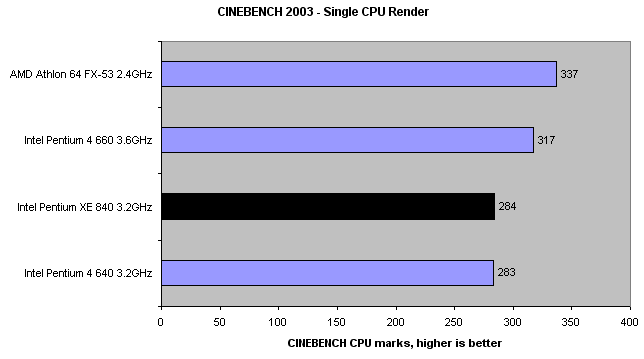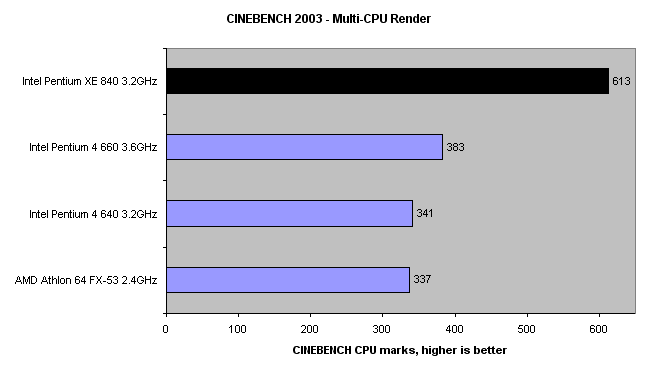KribiBench, CINEBENCH
Multi-threaded results
How things change when an application can take full advantage of a new core's architecture. KribiBench is a multi-threaded benchmark that runs like a dream on the dual-core HT-equipped XE 840. To put the benchmark score into perspective, it's the first time that we've seen the 10FPS barrier broken by a desktop system. Parallelism at its finest.

Here's CINEBENCH 2003's CPU render run with the single CPU setting. In this state, the second core and Hyper-Threading don't contribute to the overall score.

Here's the same benchmark with the multi-CPU option invoked. HT-equipped Pentium 4s get a boost, but the dual-core Smithfield simply tramples all over the other three. Another instance of where a well-coded multi-threaded application fits the XE 840's architecture like a glove. The multi-CPU setting allows the XE 840 to split the render into 4 sections. To put this benchmark into some kind of perspective, a dual-CPU Intel Nocona 3.4GHz Xeon system returns a score of 637 CINEmarks. That's almost matched by a single LGA775 processor package. You can see why it will appeal to the workstation crowd.









